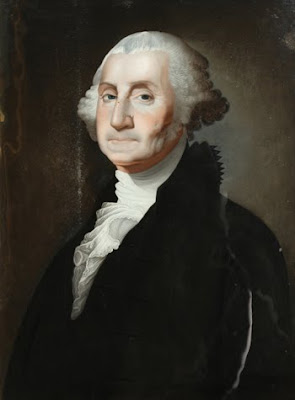Chinese copies of Gilbert Stuart’s portrait of America’s first president were denounced by the artist, desired by collectors—and ended up in some important museums.
It’s an international exercise in intrigue,” said Douglas Hyland, director of the New Britain Museum of American Art in New Britain, Connecticut.
He was speaking about a painting that was recently donated to the museum and is now on exhibition. The label reads: “George Washington c. 1800–1805.” The work is a copy of a Gilbert Stuart painting attributed to a Chinese artist named Foeiqua—who, like other artists in China, made a number of reverse paintings on glass. (The artist paints on the back of the glass so that the image can be seen from the front.)
“The painting was donated by a Connecticut woman, Caroline N. Dealy,” Hyland said. “She said her mother had died and that members of her family wanted to give the painting in memory of their mother. Since we are the oldest museum of American art in the United States, we were really thrilled. The museum has wanted to acquire a portrait of George Washington for many years.
“As soon as it went on display, it became the subject of a great debate: Should it be at an American art museum? Is it an American work of art? The truth is that it’s a copy of a Stuart made by a Chinese artist for an American collector. It’s a compelling story. It was painted 200 years ago, and 200 years later we’re dealing with the same issues. There are still works being pirated in China today—movies, books, CDs.”
Stuart had to deal with the issues in 1802, when there was, according to Carl Crossman in his book The China Trade (1972), “a mania for Washingtoniana…”
The Many Faces of George Washington, ArtNews

